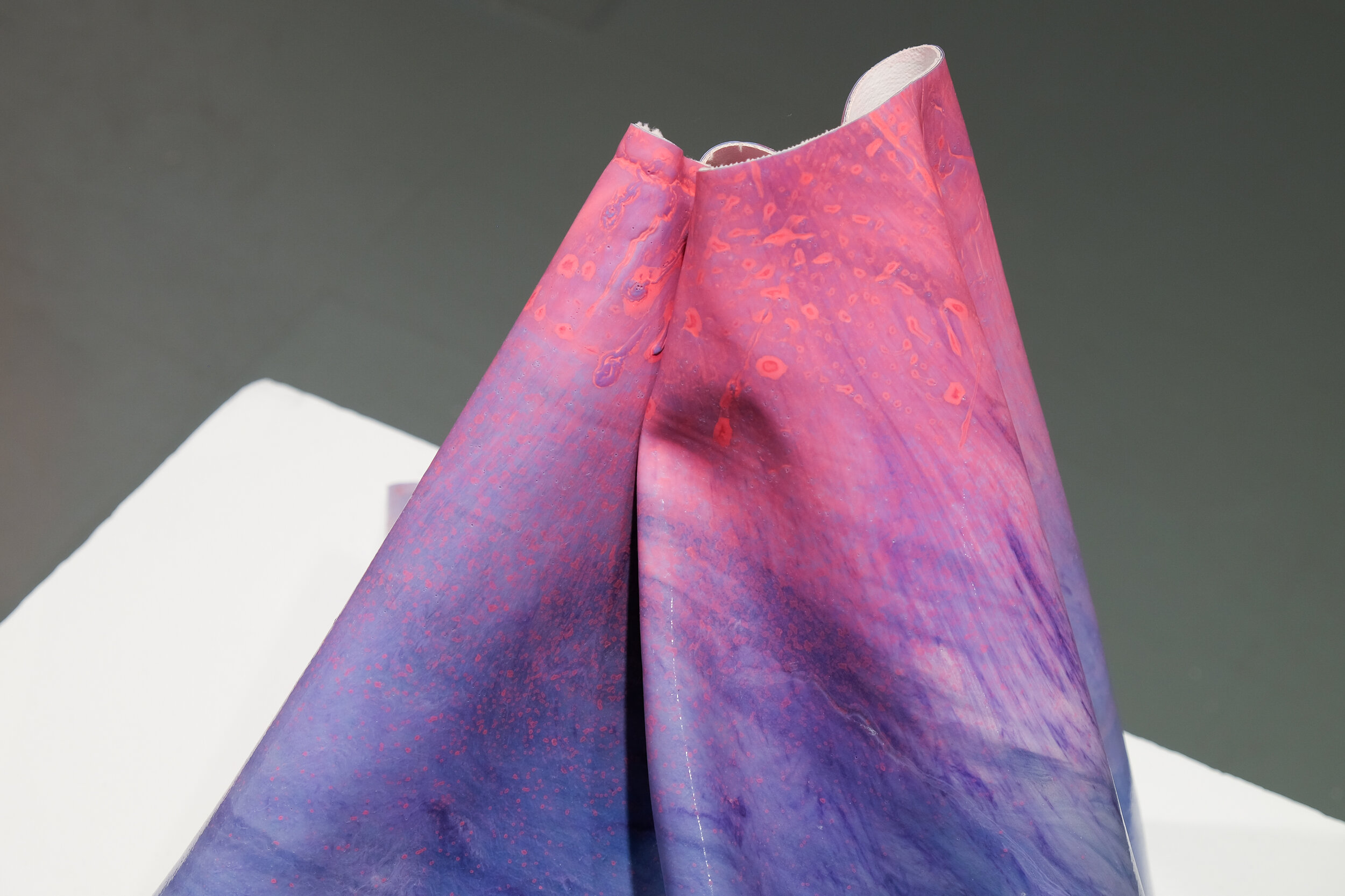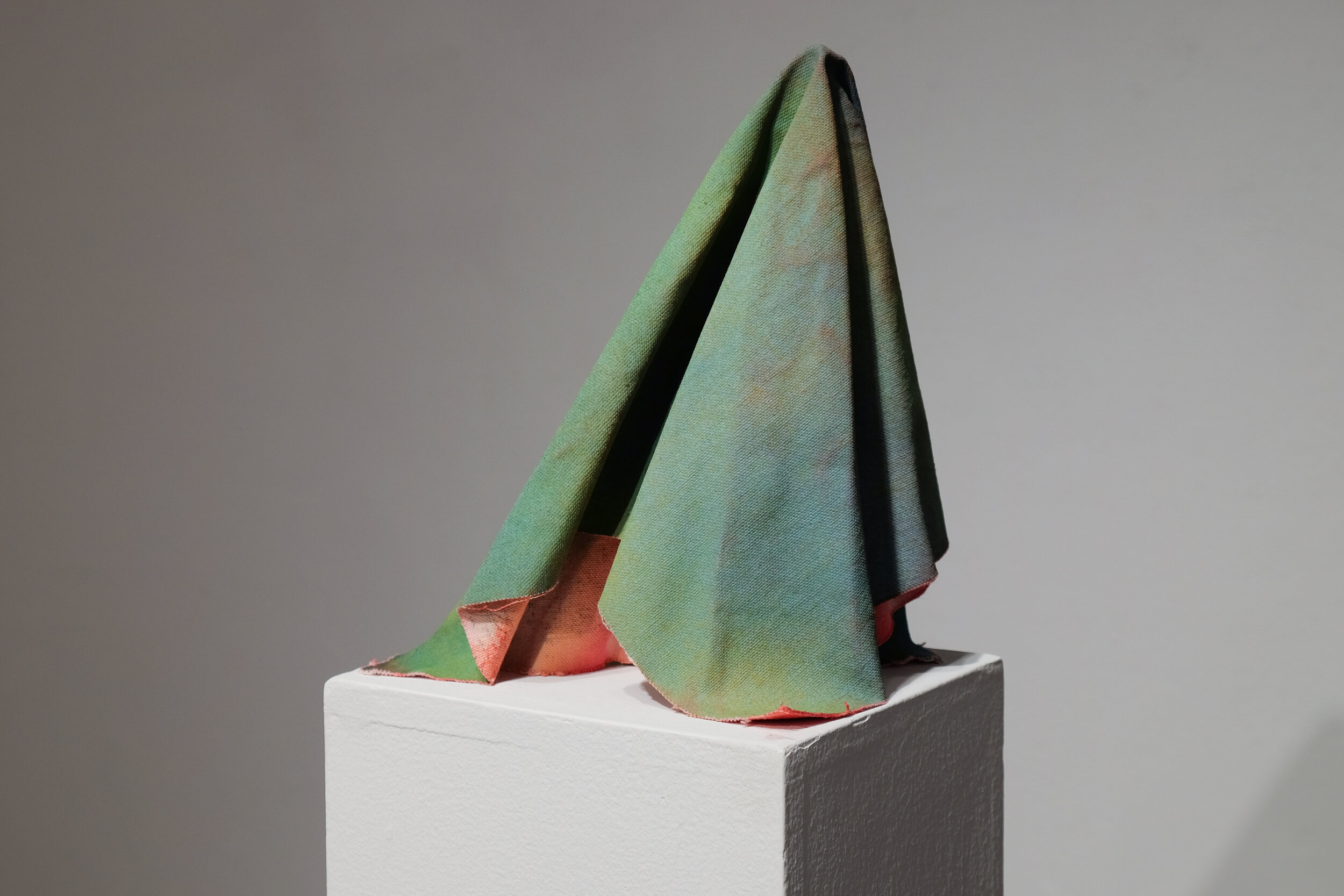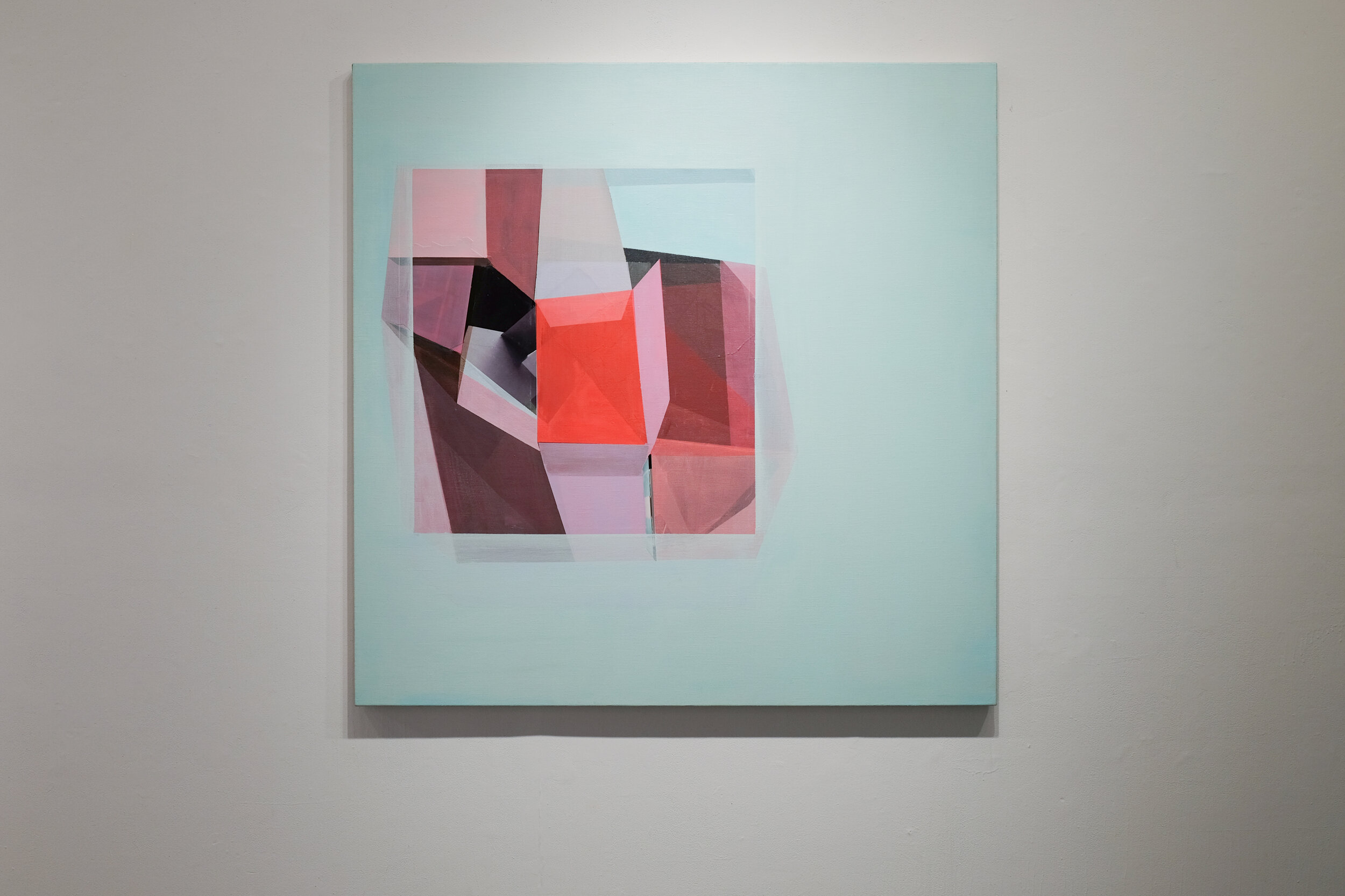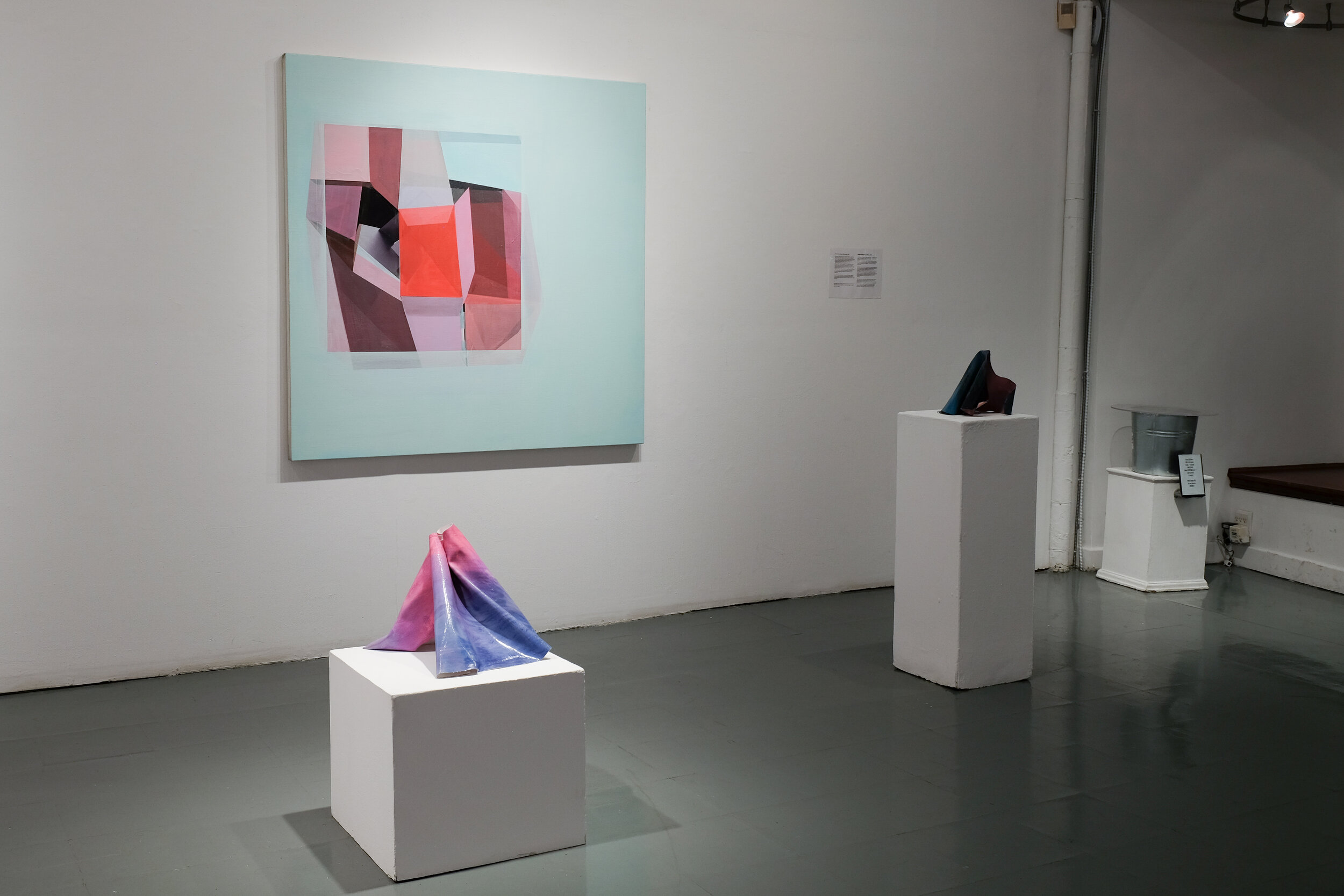Image: Antonietta Grassi & Katherine Pickering.
Unfolding pairs the work of two painters with dissimilar but complimentary approaches to the medium. Antonietta Grassi uses the traditional form of the canvas to explore ideas of spatial memory and the destructive nature of time, using distorted geometric forms as exploratory tools. Her paintings aim to suggest that memories can “produce fleeting blueprints for structuring the present”. Katherine Pickering’s work explores an alternative narrative of painting, using the material qualities of paint as a formal tool and reversing the traditional relationship between paint and canvas. This allows the work to inhabit the realm between painting and sculpture, as the material normally used to support a medium is now being supported by this very medium.
KATHERINE PICKERING – STATEMENT
For the last few years I’ve been spending a lot of time in dark places. I take walks at night and in my studio I make work that explores the experience of looking at darkness.
We don’t always use our vision in creative ways and this can limit how we perceive the world around us. My recent work is, in part, an attempt to investigate – and indeed challenge – these limits.
At night, a lack of vision is made up for through a heightening of touch, hearing and kinesthetic perception (the awareness of our bodies in space). Darkness often brings with it ambiguity, connotation and subjective judgement; it also has the potential to connect us to our imaginations and to our bodies in ways not available to us during the day. Attention to darkness requires a willingness to engage with uncertainty – a similar engagement is required when looking at abstract painting.
With abstraction, scale, colour and surface are often used to describe sound, movement and touch. In that sense, the material qualities of paint approximate a narrative apparatus, like that found in realism. In my recent work, the narrative of the painting is reversed: instead of the stretched canvas supplying the paint its support, it is the paint that holds the canvas in place and, as such, allows it its narrative.
ANTONIETTA GRASSI – STATEMENT
My work is about memory and space. Perhaps no memory being stronger than that associated with one’s childhood home, my paintings reflect an emotional space that has been shaped by these memories and the passage of time. Having lost both of my parents within a short time frame, I was confronted with the task of emptying the home I had grown up in of its possessions. The psychological and physical impact of facing this process led me to explore fragments of deconstructed and nonsensical space through hollowed cubes and skewed geometric shapes. What was once a home was transformed into a disembodied shell filled with a flurry of emotions, symbolizing acts of removing, dismantling, discarding, detaching, remembering, and forgetting. My work reflects how these memories of the past produce fleeting blueprints for structuring the present, and how a delicate stability is attained through the solidity of color, shape and light.
Katherine Pickering received an MFA in Studio Art from Concordia University’s Painting and Drawing Department in 2009 and a BFA in Visual Art from the University of British Columbia, Okanagan campus, in 2006. She has exhibited and attended residencies in Turkey, Iceland, and Canada, including residencies at the Banff Centre for the Arts (2008), the Vermont Studio Center (2011 & 2013). She lives in Vernon, British Columbia and teaches at the University of British Columbia in Kelowna.
Antonietta Grassi’s work has been featured in solo and group exhibitions at museums and galleries in Canada, the United States, and in Europe, including Muséé National des Beaux-Arts du Quebec, Museo Civico di Molise in Italy, Kunstwerk Calshutte in Budelsdorf, Germany, the Boston Center for the Arts, Manifest Gallery in Cincinnati, the McClure Gallery , Lilian Rodriguez and the Leonard and Bina Ellen Art Gallery in Montreal, Newzones in Calgary, and Leo Kamen, Artcore and John B. Aird Gallery in Toronto. In addition, her work is in public, corporate, and private collections, including the Musée National des Beaux-arts du Québec (MNBAQ), the Archives of Ontario, Museo Civico Di Molise, the Boston Public Library, and Yamana Gold in Toronto, Canada. Grassi’s work was selected for two public art projects in Canada sponsored by Le Museé au Ciel Ouvert in St. Lambert and Showfrette in Beloeil, Quebec. She holds a BFA from Concordia University and an MFA from l’Université du Québec à Montréal.
She is the recipient of awards and honours, including grants from the Canada Council for the Arts and the Conseil des Arts et Lettres du Quebec. She received a Canada Council Project Grant in Visual Arts in 2017. She lives and works in Montreal where she also teaches in the Visual Arts department of Dawson College.
Antonietta Grassi wishes to thank the Canada Council for the Arts for their generous support.





















































